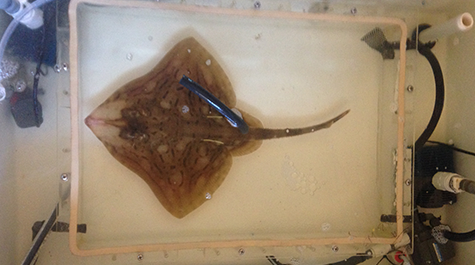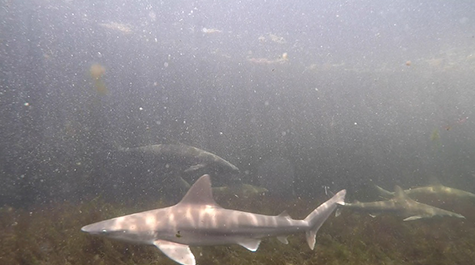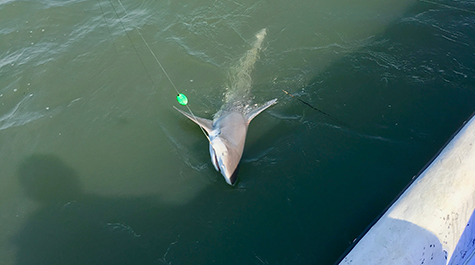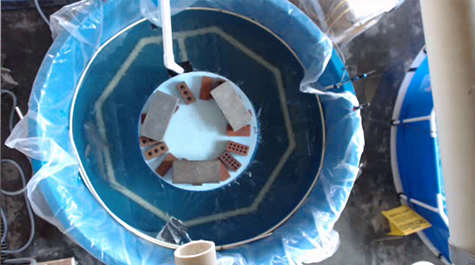Every Week is Shark Week at VIMS
For more than 30 years, the Discovery Channel’s "Shark Week" has captivated millions of television viewers with stories and footage of some of the ocean's most fascinating creatures. Here at VIMS, our students, faculty, and staff engage in "shark week" throughout the year as they work to unlock the many secrets these animals hold. They use their findings to address broader questions facing ocean ecosystems, such as how the number of apex predators impacts marine food webs.
Two VIMS scientists currently engaged in shark-related studies are PhD graduate students Dan Crear and Gail Schwieterman. They’re conducting their research in concert with our Shark Monitoring and Assessment Program, which includes the VIMS Longline Survey—the world's longest running fishery independent monitoring program for sharks, skates, and rays.
Is it hot in here, or is it just me?
Global climate change is altering coastal marine systems in many different ways, including increases in seawater temperatures, ocean acidity, and the number, size, and duration of low-oxygen “dead zones.” These environmental conditions are known to affect local fish, but quantifying how these changes will impact the species found in Chesapeake Bay and coastal waters can be tricky.
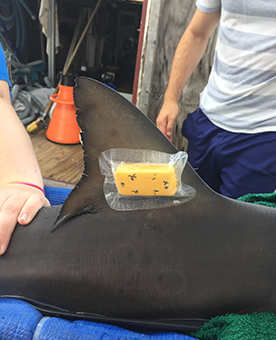 Both Schwieterman and Crear have been working for the past several years to understand how these changes might impact two local species of cartilaginous fishes in particular—sandbar sharks and clearnose skates.
Both Schwieterman and Crear have been working for the past several years to understand how these changes might impact two local species of cartilaginous fishes in particular—sandbar sharks and clearnose skates.
After capturing individuals of these species in the shallow waters of Virginia’s seaside Eastern Shore, Schwieterman and Crear hold them in tanks at VIMS' Eastern Shore Laboratory in Wachapreague. From there, they transfer the animals to smaller tanks outfitted with various sensors, including accelerometers like those that help you navigate with a smartphone. By elevating water temperatures in these tanks and using respirometers to measure changes in the animals’ metabolism, they hope to be able to predict the extra energy these creatures will need for growth, reproduction, and seasonal migrations in a warmer world.
Schwieterman and Crear are also looking at hypoxia tolerances, or how much these animals might be affected by the low-oxygen events that are common in Chesapeake Bay and in Eastern Shore waters during the summer months. These experiments will help scientists better understand which species will be most impacted as dead zones continue to intensify.
Catch and release
Large numbers of recreational anglers in Chesapeake Bay use catch-and-release methods to promote more sustainable fisheries. This is thought to be an especially effective strategy for sharks, which are long-lived animals with relatively low reproductive rates.
However, the fate of sharks following capture and release is poorly known. The process of capture is stressful, involving exercise, tissue trauma, and air exposure. 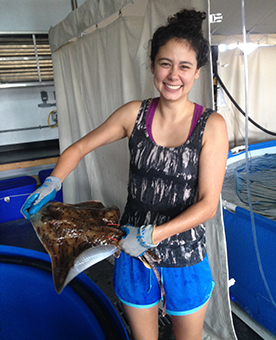 These factors can cause chemical changes in the blood, which could negatively impact cardiac function and other bodily processes. If damage to a shark’s heart or other organs is so severe that it leads to death, the animal will of course not go on to reproduce and contribute to the population.
These factors can cause chemical changes in the blood, which could negatively impact cardiac function and other bodily processes. If damage to a shark’s heart or other organs is so severe that it leads to death, the animal will of course not go on to reproduce and contribute to the population.
Schwieterman is studying heart function in three different species of elasmobranch fishes found in coastal Virginia (sandbar sharks, smooth dogfish, and clearnose skates) to see how it is impacted by the chemical changes that blood undergoes during capture and release. So far, it looks like each species responds to these changes differently. This finding suggests that future stock assessments should use species-specific values to account for post-release mortality, not the generic, shared values used in stock assessments today.


